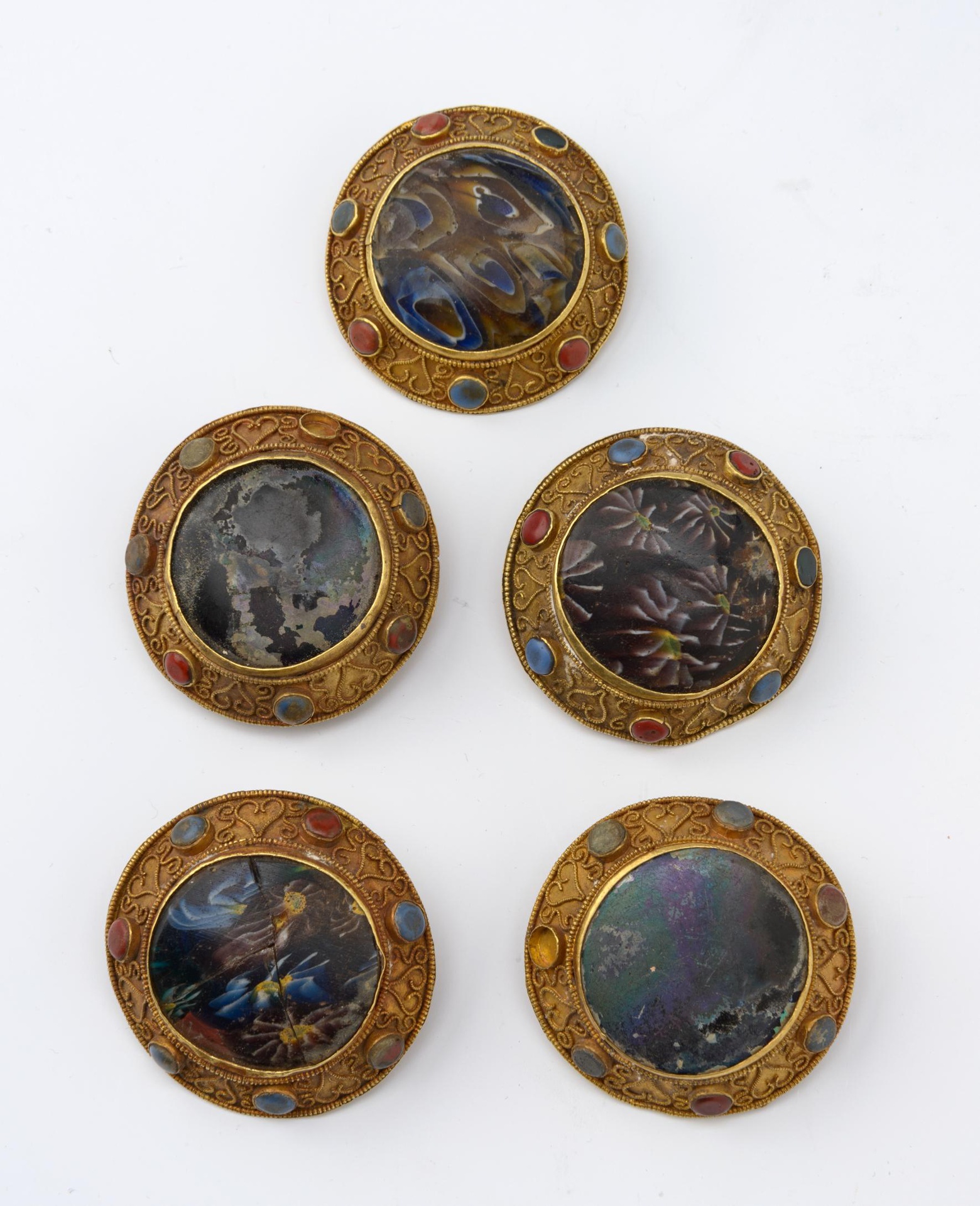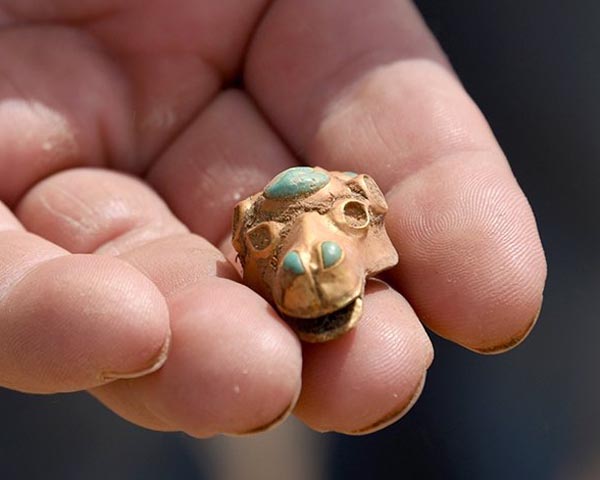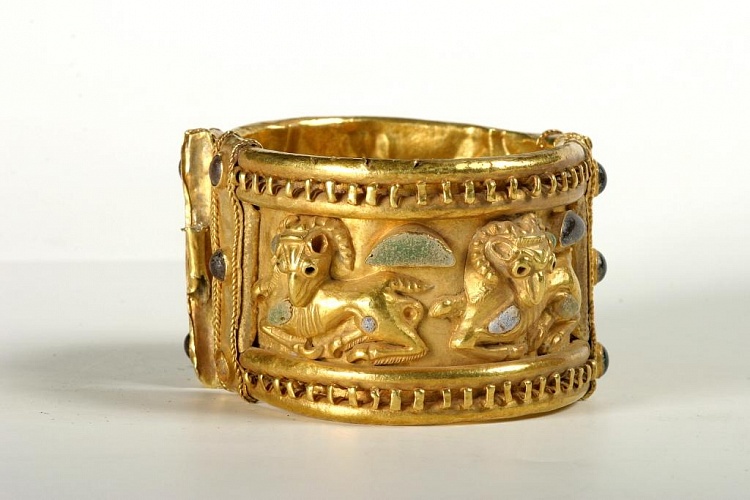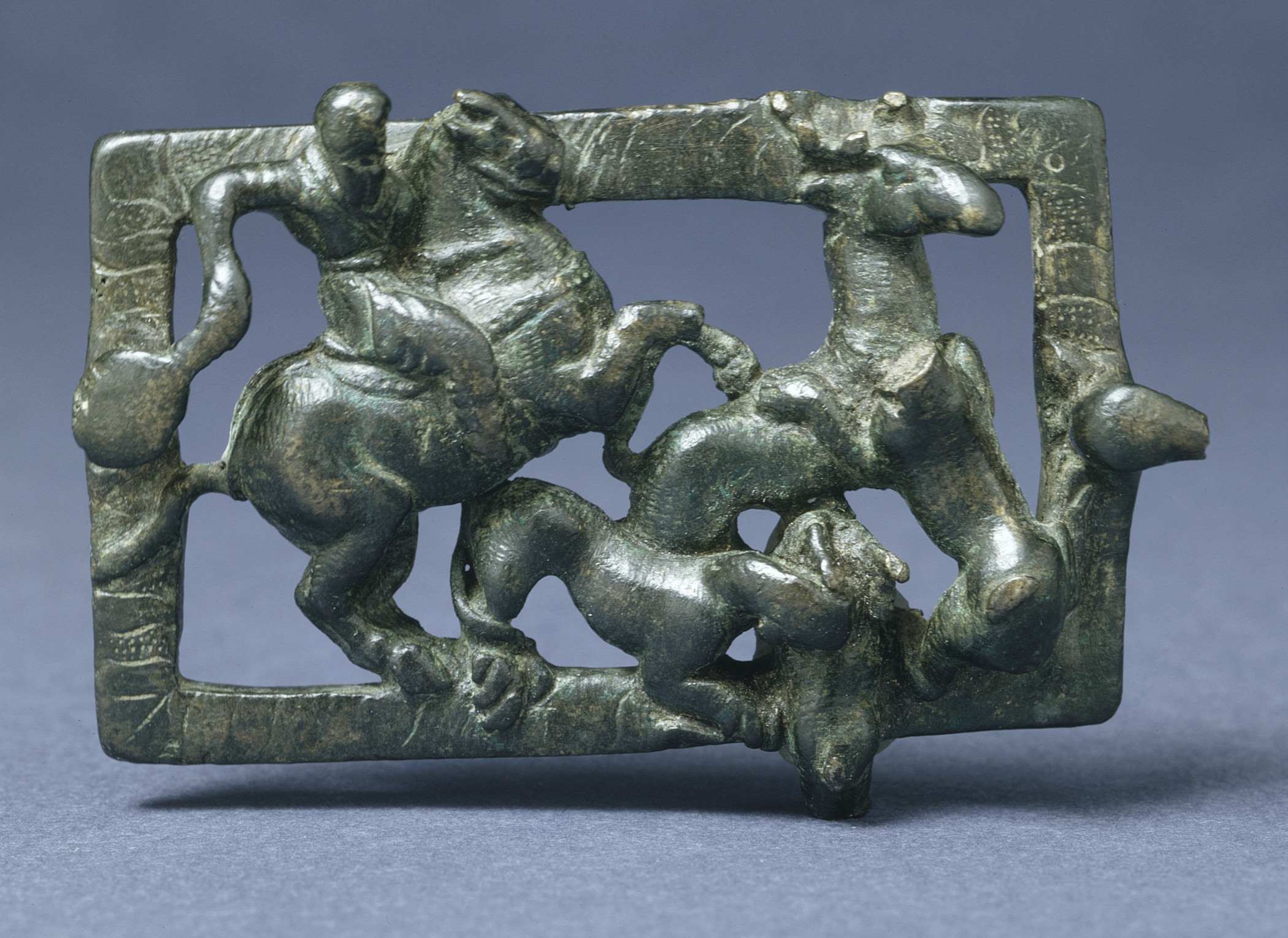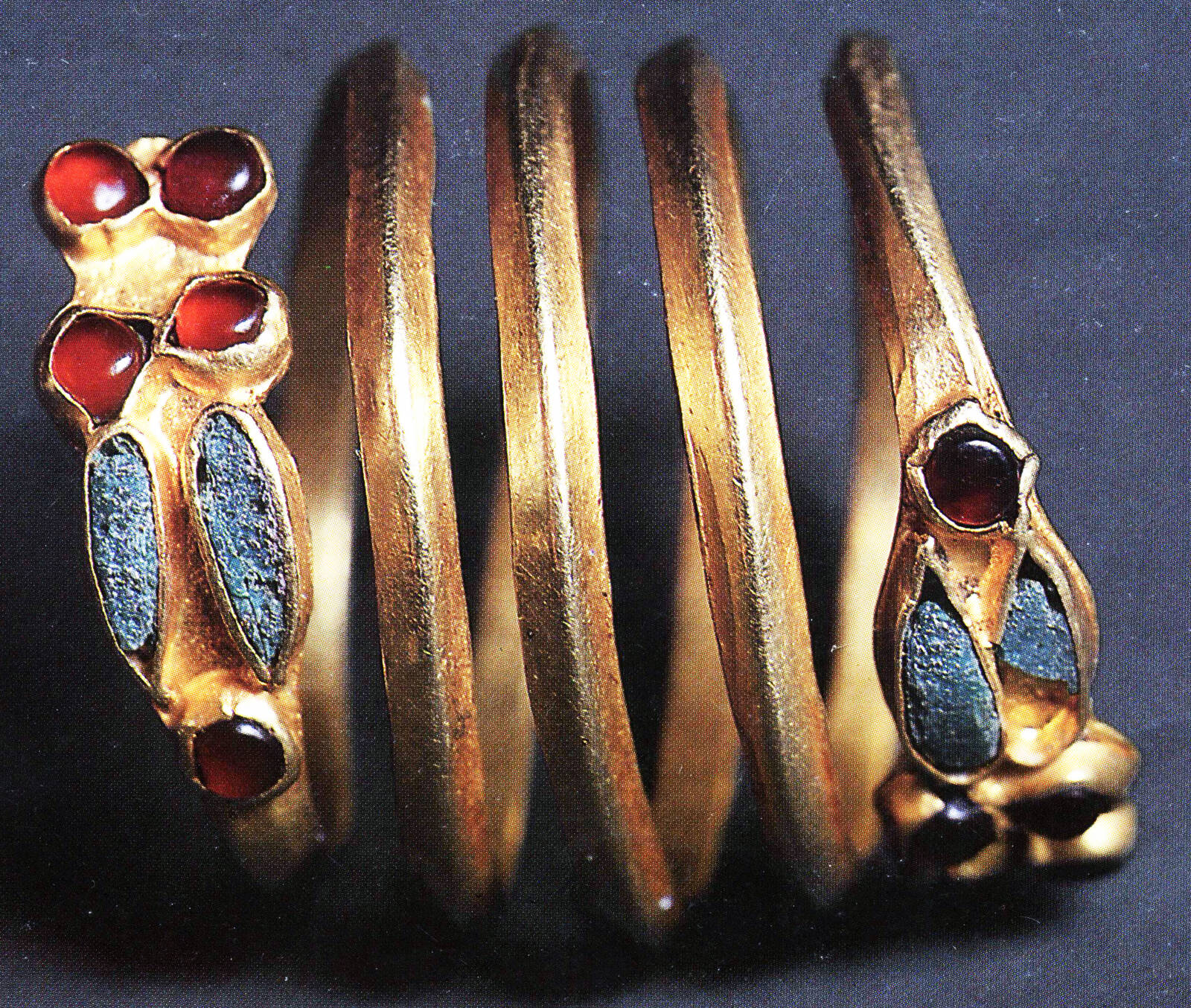M. Treister, A. Chugaev, Sources of metal of silver objects from burials of nomads of Asian Sarmatia of the 2nd century BC – 3rd century AD after the results of archaeological and Pb-Pb isotopic studies
https://www.academia.edu


Volgograd, Regional Local Lore Museum, inv. no. 21573. Photos by M. Treister, 2015

In a male burial no. 3 of burial mound no. 14/1984 of the Pervomaisky-VII necropolis in the Lower Volga region details of a belt set were found in situ on the pelvic bones of a buried person. As noted by the author of the excavations, the belt was fastened with a rounded silver buckle with two broken-off protrusions in the upper part. When working with the collection in 2015, we were able to see only one broken peg with a bent end. On either side of the silver buckle, large teardropshapedplaques with cloisonne decoration were found. One of the plaques (buckle), which is placed on the right on the reconstructions, has an oval-shaped hole for threading the belt and the pin with which the belt was fixed. The other smoothly curved plaque has no hole and no pin, but there is a loop on the reverse side, which served to fix it to the belt. Silver brackets were also attached to the leather belt, alternating with spherical bronze and silver small rounded plaques. Three smaller teardrop-shaped plaques were attached to a belt on the sides of the large plaques: two on the right and one on the left side. A narrow tip was attached to a leather band hanging from the belt on the left.
The partition strip of one of the large plaques (AG-14) was analyzed. These are drop-shaped plaques which have a bronze plate base. The front side is decorated in cloisonné technique, the bridges between the smalt inlays are made of a bronze strip of rectangular cross-section, which was soldered onto the base plate. The center of the composition is a drop-shaped cloison with a pale blue inlay. This inlay is surrounded by five ornamental bands of two types. The first, third and fourth rows from the center represent the “running wave”. The rings are filled with white smalt, and the triangles formed by the bridges are filled with pale green (outer row) and light brown (inner row) inlays of smalt. The second and outer (fifth) friezes are decorated with bands composed of semi-circles, with the curved side towards the center of the plaque. The semicircles are filled with inlays of pale green and green smalt, and the triangles formed by them are filled with brown smalt (Figs. 19—20). Given its construction the buckle with a slot for a belt and a pin on the frame fits into the type of belt buckles that have become widespread in Asian Sarmatia since the 3rd —2nd centuries BCE. The teardrop shape of the plaque, however, is absolutely unique. Typically, the belt plaques in question were either in the form of a ring or figure eight, or had a rectangular shape. Somewhat less common are belt plates that are relatively close to the considered ones, “plates with a rounded edge”, according to the classification by M.A. Devlet (Devlet 1980: 12—13, Figs. 5; 26—28, Pl. 20—22). Their front edge is also convex, the long sides, however, do not converge at an angle, forming a teardrop-shaped figure, and the back edge of the plaques is straight. The most famous belt set with plaques of this shape, but made not of bronze, but of bone, was found in a warrior’s burial in burial mound no. 2 of the Orlat necropolis in Uzbekistan.
Their prototypes (in form) are known among the so-called Ordos bronzes originating from the Xiongnu monuments in Northern China, from Transbaikalia and the Middle Yenisei region.
The closest in shape prototypes (?) are carved horn plaques, covered with gold foil and related to a horse’s garment, dating from the late 4th — early 3rd century BCE burial mound no. 36 of the Berel necropolis in Eastern Kazakhstan.
As well as the shape, the decoration of the plaques from Pervomayskiy and the technique of ornamentation — a cloisonné with sockets formed by bronze bridges, is unique for the belt plates of the type under consideration. The only close parallel, both in material and in decoration, is represented by the decoration plate of a casket (?) from burial mound no. 1 near Zubov Farmstead in Trans-Kuban region (Gushchina, Zasetskaya 1989: 117, no. 130; Treister 2004: 205, Fig. 7; 214, no. 28; 2007b: 291; Mordvintseva, Treister 2007: vol. 2, 119, no. В13.4, Pl. 51), on which the rows of “running waves” and rhombuses are shown, although the color scheme (red-blue) differs from the decoration of the details of the belt set from Pervomayskiy. Taking into account our observations about the tips of the belts, decorated with cloisonné technique from the Sarmatian burials of the North Pontic region (Treister 2004: 202—205), including the tip from the Porogi with the tamga of King Pharzoius, made of wire soldered on the back (Treister 2004: 194, Fig. 3: 18—20; 213, no. 21), there is every reason to assume the possibility of making a belt set from Pervomayskiy in one of the workshops in the North Pontic region, especially since for the time under consideration we have no evidence, either archaeological or pictorial, of the use of belt plaques of this shape, with such a decoration and made using the cloisonné technique in Parthia.

